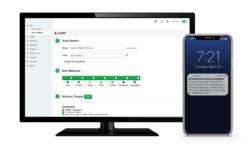Hospital and University Campus Security: How to Protect Lone Workers
Healthcare and university employees who work offsite or at remote campus locations can face significant safety and security challenges. How are you protecting them?

Home healthcare workers as well as other lone workers employed by campuses need protection too.
In terms of campus security, when one thinks of employees at a hospital or college campus, the image that usually comes to mind is that of a doctor or nurse working in the maternity or emergency department; a faculty member in their classroom; or a staff member in their office. Because these locations are on campus, employees in these areas are likely to be under the watchful eye of administrators, public safety officers and security cameras.
But what about workers who are offsite or at remote campus locations? How are hospitals and institutions of higher education protecting them?
This issue is particularly challenging for the home healthcare market. According to the U.S. Census Bureau, more than two million homecare workers across America provide personal assistance and healthcare support to older adults and people with disabilities in home and community-based settings. On average, these workers handle about five visits per day, and according to one NIOSH study, about 4.6 percent of home healthcare workers report having been assaulted by a patient at least once in a 12-month period.
The risks to home healthcare workers come from a variety of sources because, unlike a hospital, a patient’s home environment isn’t controlled. Risks to caregivers include pets, weapons, illicit drugs and even family violence.
Unfortunately, many healthcare organizations have not developed appropriate ways to protect home healthcare workers from violent patients and others they may encounter in a patient’s home or in the surrounding community.
And lest you think the lone-worker challenge only applies to the home healthcare industry, think again. Employees, such as facilities personnel who are working in isolated, high-risk locations like boiler rooms also must be protected. Traditional onsite employees walking to their vehicles in remote parking lots also face safety and security risks.
Not addressing these issues can affect job satisfaction as well as staff recruitment and retention rates.
CLICK HERE to download the report.
If you appreciated this article and want to receive more valuable industry content like this, click here to sign up for our FREE digital newsletters!
 Leading in Turbulent Times: Effective Campus Public Safety Leadership for the 21st Century
Leading in Turbulent Times: Effective Campus Public Safety Leadership for the 21st Century
This new webcast will discuss how campus public safety leaders can effectively incorporate Clery Act, Title IX, customer service, “helicopter” parents, emergency notification, town-gown relationships, brand management, Greek Life, student recruitment, faculty, and more into their roles and develop the necessary skills to successfully lead their departments. Register today to attend this free webcast!







